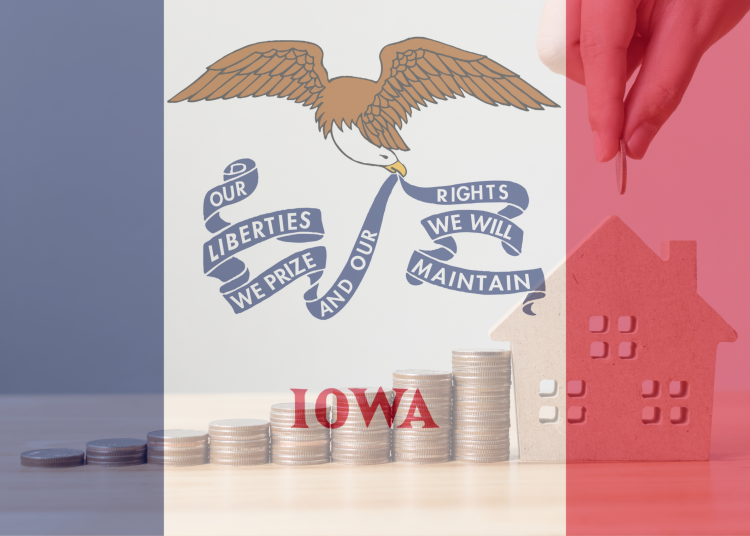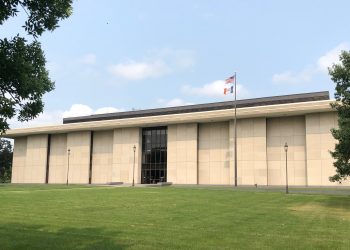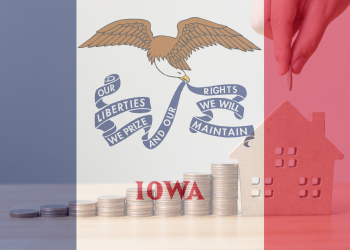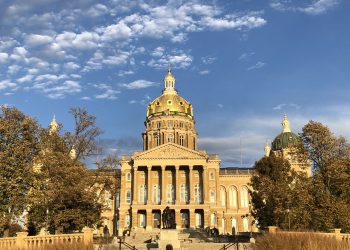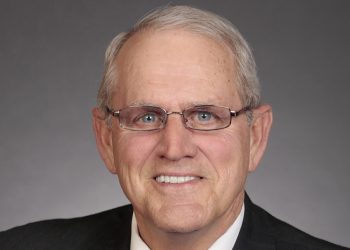DES MOINES, Iowa – Iowans for Tax Relief (ITR) launched a searchable property tax database called ITR Local to help Iowans “start a conversation” with their elected city council member, county supervisor, and school board members about their property tax bill.
ITR Vice President Chris Hagenow told The Iowa Torch that their complaint is coming a year too late when taxpayers receive their property tax bill.
“We want people to see that ahead of time because of the way property taxes are paid in Iowa,” he said. “Property tax statements are going out right now so this issue is fresh in people’s minds and if we can start that conversation now it makes it better down the road.”
ITR identifies five property tax “pain points” and an action item in the state’s 18-month property tax cycle.
This month, Iowans will receive their tax statements. Hagenow said property owners should turn it over to see the taxing authorities who created the bill, how much they taxed you, and how their budget grew from the previous year.
The second pain point in this current cycle will be on September 31, 2021, when the first half of 2020’s property taxes are due. With city and school board elections, taxpayers can take action to express their satisfaction or dissatisfaction with city and school district property taxes on November 2, 2021. County supervisor elections are on November 8, 2022.
ITR points out that local taxing authorities will create budgets from December 1, 2021, through February 28, 2022, and that is a great time for residents to weigh in on how much they are spending.
April 2023 will be the next time taxpayers receive their property assessment. Properties are assessed in odd-numbered years by the county assessor. They note that those assessments are just part of the formula used. Therefore, some taxpayers will see their property assessment increase, but their property tax bill stays the same.
ITR Local, Hagenow says, provides taxpayers with information. He said all of the information on the website is publicly available but difficult to find. For example, ITR Local gives taxpayers information about the enrollment or population of their school district, city, and county, along with how much that local tax authority has collected in tax revenue each year for the last ten years.
“(ITR Local) came from a whole lot of ideas and a whole lot of comments from folks that are wanting more information on what goes on at the local level. People regularly comment that they’re frustrated with their property taxes, that they’ve gone up and not sharing where it all goes. Right. So this was an effort to try and get that information in one place, one easy-to-use location,” he said.
It took months for ITR to pull all of the information together.
Not only does ITR Local provide information, but they also have a link to where Iowans can email their elected officials along with talking points to give them ideas on how to initiate the conversation about their property tax bill.
Hagenow said taxpayers must see how the enrollment/population and tax revenue numbers diverge.
Property tax rates are likely reasonable “if the growth and population and the growth in property tax receipts are very similar,” he said.
“But when those charts and those trends diverge, you can easily see where there is much more money being spent. Or the money, the growth of spending is far outpacing the growth in population. And at that point, taxpayers should become concerned,” Hagenow added.
Sometimes, however, tax revenue can spike due to the development of higher-end housing and other factors.
“We don’t expect that everything is the same in every jurisdiction across Iowa, which is why we simply want Iowa taxpayers to have that conversation with their local officials,” Hagenow told The Iowa Torch.
He said he has spoken with elected officials from across the state who explain how their finance works, and he believes they are doing a good job. Hagenow emphasized most elected officials who are doing an appropriate job welcome the conversation.
“The biggest goal we have, again, is to simply help property taxpayers have that conversation with their (elected) officials and gain that understanding,” he stated.
With school districts in the Des Moines Metro, most have a gap.
In the last ten years, the Des Moines Community Schools saw their enrollment (plus inflation) increase 15.1 percent while their property tax revenue grew by 32.1 percent.
Bondurant-Farrar saw their enrollment (plus inflation) grow by 81.0 percent, while their property tax revenue grew by 97.2 percent.
Southeast Polk’s enrollment and property tax growth has remained close over the last ten years, with their enrollment (plus inflation) growing by 26.1 percent and their property tax revenue growing by 27.4 percent.
West Des Moines Community Schools saw a 12.3 percent growth in enrollment and an 18.4 percent growth in property tax revenue in the last ten years. However, Waukee has a more significant gap with an 83.5 percent growth in enrollment of 83.5 percent and property tax revenue growing by 109.3 percent.
Among Des Moines Metro cities: Des Moines saw its population grow 21.7 percent (including inflation) while its property tax revenue rose 29.4 percent. Over the last ten years, Bondurant’s population grew by 94.3 percent while their tax revenue increased by 125.3 percent. Clive saw a population increase of 28.4 percent and revenue growth of 37.3 percent over the last ten years. However, West Des Moines’ property tax revenue (32.4 percent) didn’t keep pace with its population growth (36.6 percent).
Comparing counties, Polk County saw its population increase by 30.6 percent (including inflation) and its property tax revenue grow by 45.7 percent. By contrast, Dallas County saw its property tax revenue (37.6 percent) trail its population growth (57.2 percent).
“Our system of government is a representative democracy. And in that works best when individual citizens have that relationship and have the ability to communicate those ideas with the people that are elected to represent them,” Hagenow said. “You don’t need to be angry about it, but start that conversation and build that relationship. That’s the backbone of how our government works.”



